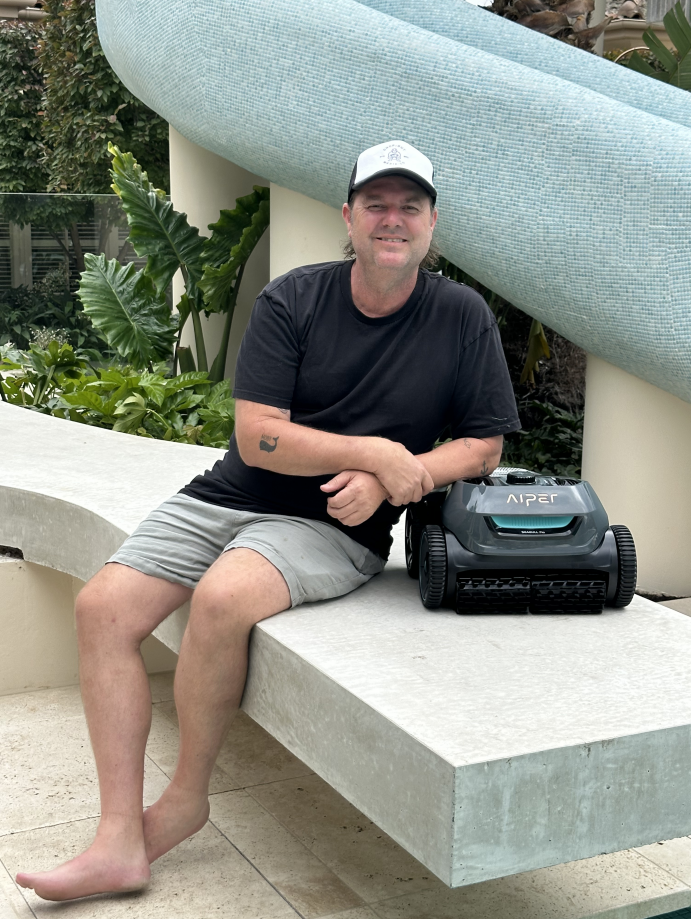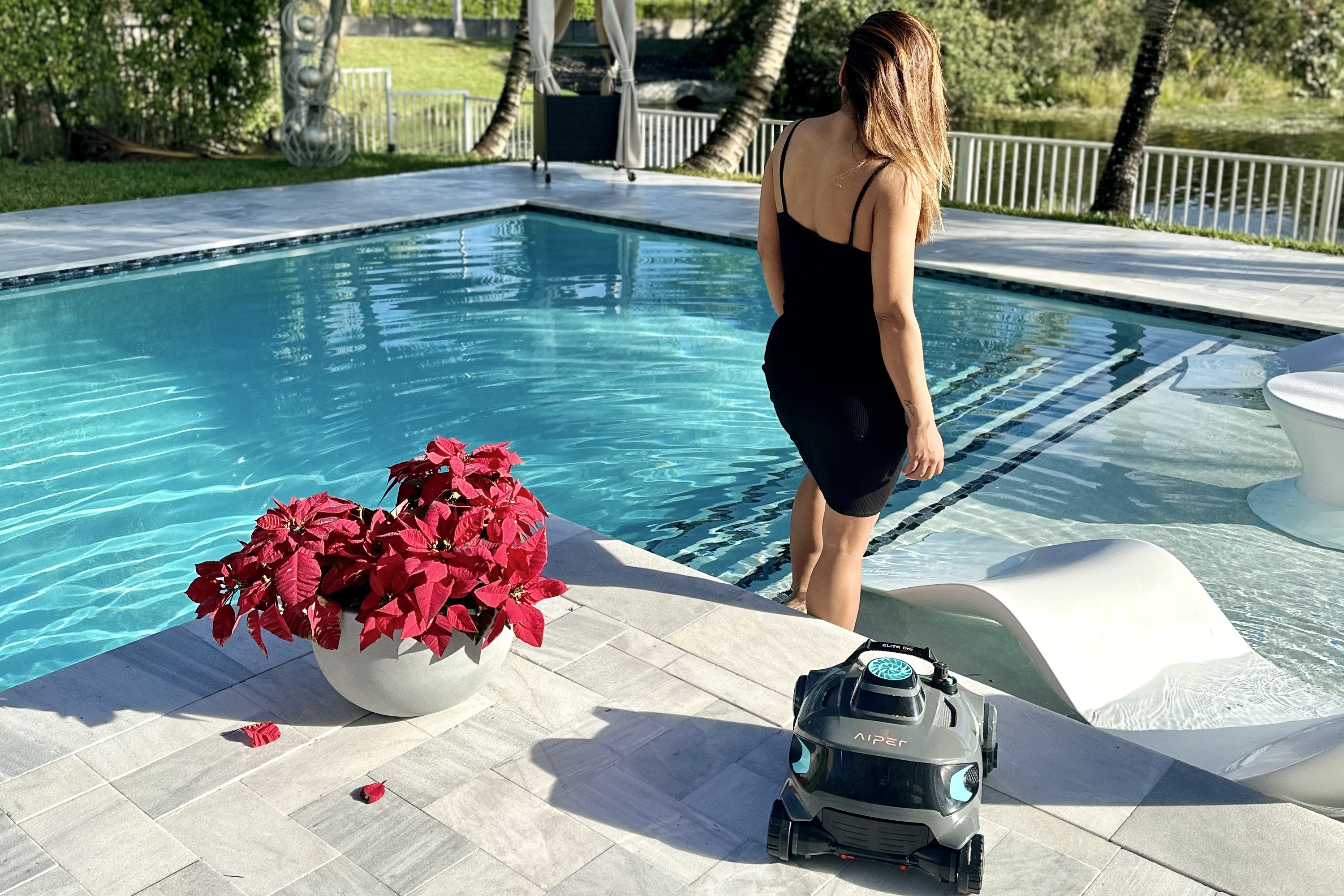
Aiper’s Innovation Takes Flight with Dave Franklin Designs Partnership
In the ever-evolving landscape of technological advancements and innovative solutions, partnerships play a crucial role in pushing the boundaries of what is possible. Aiper, a



As we round the corner into the warmest months of the year, swimming is on the to-do list for every child and most families. While fun and refreshing, swimming can result in significant injuries for children if safety isn’t a high priority.
Drowning is the second leading cause of death in children ages 1-4 and 10-14. More than 3,600 injuries are caused by drowning-related incidents each year. You can take action to prevent accidents from becoming fatal.
Before your kids strap on their trusty goggles and head out to the pool for the afternoon, knowing and understanding swimming pool safety is essential to ensure their protection during what seems like a harmless pastime.
One of the most beneficial safety precautions a parent can take is teaching your children how to swim. Many guidelines suggest teaching your child to swim as young as four years old. However, others have found that once they can properly hold their head up unassisted, babies can begin swim lessons, typically around six months to a year old.
Getting kids into the water helps keep them prepared and unafraid if anything were to happen unexpectedly. Teaching them to swim can be essential in a life-or-death situation and act as the building block for future aquatic skills. The sooner they learn, the sooner they’re safe.
Pool drain safety is vital for children, especially at a young age. Most swimming pools use a suction-based drain system to filter out dirt and clean the pool. However, the suction can quickly put your children at risk of drowning. While pool drain incidents are rarer than others, knowing and recognizing that they can happen is essential.
If a pool-related incident occurs, particularly in a pool that a lifeguard does not supervise, it’s crucial to know CPR. Children can drown in under a minute; CPR can be imperative while waiting for EMTs or medical personnel to arrive and take over. Children are not the only ones susceptible to drowning, many adults are also at risk, so it’s beneficial to know the proper CPR techniques to save any life in an emergency.
If you have a private pool, adding layers of safety between your children and the water is also beneficial. Children can slip away and out the door quickly and quietly. That said, a solid exterior door lock is extremely valuable in plenty of circumstances, especially when you have a pool in the backyard.
Not only can an exterior door lock help but ensuring that you have a sturdy and protective gate can also be a lifesaver. However, it’s only as helpful as the lock that keeps it shut. The device should be tall enough so your child can’t reach it.
Regardless of the safety measures you take to keep your child from ever reaching the pool without your supervision, some kids are extra sneaky. When it comes to water incidents, every second counts; an underwater alarm will detect water movement and alert you when your child is in danger. Not to mention, a pool alarm can also help save your pets from accidental drownings as well.
Pool covers have plenty of advantages besides keeping debris out of the water. Investing in a quality safety cover can be one of the best ways to protect your children from falling into the water while your pool isn’t in use. There are hundreds of options on the market. However, some of the best choices are mesh pin-down safety covers, solid pin-down safety covers, and automatic pool covers. If purchasing a pool cover, ensure its installed safely by a certified professional to guarantee this choice works for you.
If a pool cover is out of the question, your next best choice is to install a swimming pool safety net. Safety nets cover the pool’s surface and protect children and pets from falling into the water. A swimming pool safety net is a low-cost solution to saving lives.
Installing a protective pool fence around your pool can add yet another protective layer between the water and your children and is one of the most beneficial methods for preventing water-related incidents. In more than 75 percent of drowning cases, the child was seen nowhere near the water less than five minutes before being found in a pool. A fence can be another safety precaution that keeps your child from facing tragedy.
Teaching your child to swim without assistance is a process, and they aren’t going to be professional swimmers after one lesson after all. Swimming aid tools give your child something to lean on when they need a break. Beneficial swimming aids include life jackets, water wings, pool noodles, kickboards, inflatable tubes, tube vests, and pool floats. Keeping plenty of aids handy can help your child in moments of potential distress in the water and keep them entertained with a variety of fun options.
Most drownings occur when children go unsupervised. Even simply heading inside to grab a drink or use the bathroom leaves enough time for a child to drown. Whether your child is in your backyard or community swimming pool, they must always be under constant watch by you or another adult. Again, it only takes a minute, and if you’re always paying attention, you’ll be able to spot a situation before it becomes a problem.

In the ever-evolving landscape of technological advancements and innovative solutions, partnerships play a crucial role in pushing the boundaries of what is possible. Aiper, a

The Maldives (Photo by One & Only Reethi Rah) There are fantastic pools all over the world and then there are the pools that we’ll

You always wanted a pool in your house and now you have it! You are enjoying all the positive perks of this joyous luxury and

Pool cleaners are definitely the best for quickly and efficiently cleaning your pools. However, without a pool skimmer, a pool cleaner or pool vacuum will

Thanks to modern technology, you can save time and money while keeping your pool clean. Introducing the robotic pool cleaner― your all-in-one pool companion. But
Aiper 2023. All Rights Reserved